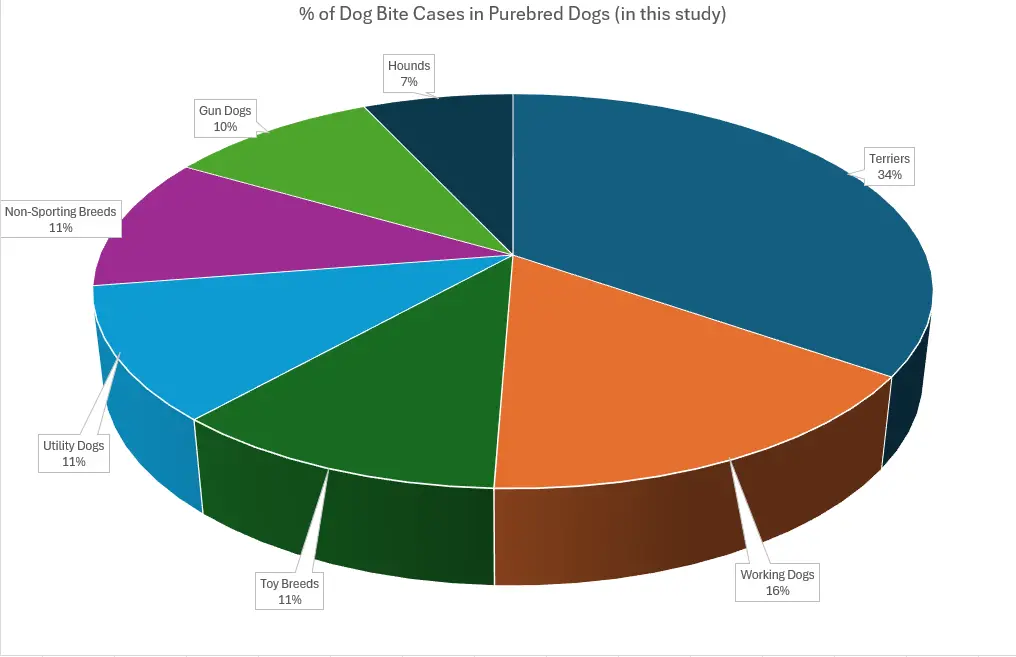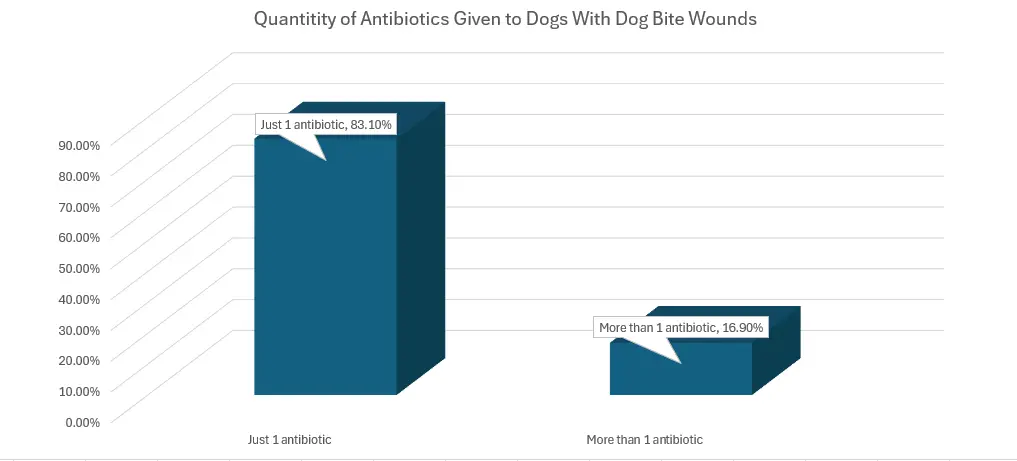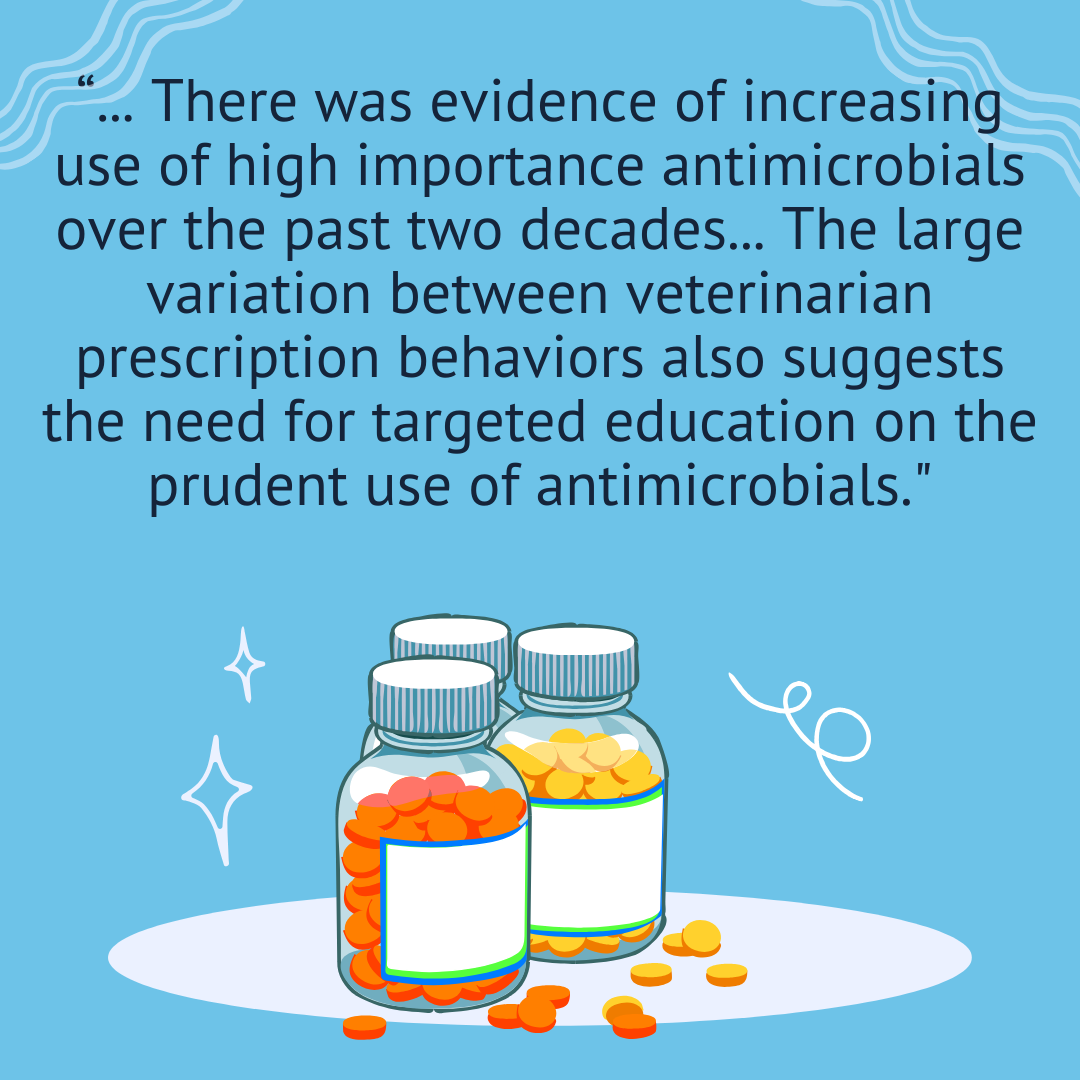The decision to prescribe antibiotics gets weighed more carefully now than in the past because of the increase in meds-resistant infections. When it comes to antibiotics and dog bites to other dogs, veterinarians sometimes do NOT prescribe antibiotics if the dog bite wounds get clipped cleaned promptly by the veterinary team. If signs of infection develop, then sure, you can get some antibiotics for your dog. However, this 10-year retrospective study out of Australia generated some interesting results about how antibiotics and dog bites get paired up, including sometimes under-dosing.
Antibiotics and Dog Bites Study Overview
The researchers used data from something called VetCompass Australia (VCA), which is a platform that collects and aggregates de-identified veterinary clinical records. They pulled antibiotics and dog bites data from a 10-year period (June 1998 to August 2018). They whittled down more than 72K records, using various criteria, to end up with these final cases:
- 1,713 dog bite wounds in 1,655 dogs (full data set)
- Further narrowed to 1,405 dog bite wounds in 1,375 dogs (analyzed data set)
- Some dogs had as many as 4 bite wounds.
- 54.4% males (of those 60.7% neutered)
- 45.6% females (of those 76.6% spayed)
- Median age 4.6 years
- Median weight 19 kg (about 42 pounds)
- 60:40 split between purebred dogs and mixed breed dogs
Sadly, the study reports that 8 dogs were euthanized due to their injuries.
Of the purebred dogs, here's how the breed type broke down:
- 34.7% Terriers
- 15.9% Working Dogs
- 11.0% Toy Breeds
- 10.9% Utility Dogs
- 10.9% Non-Sporting Breeds
- 9.70% Gun Dogs
- 6.90% Hounds
Categories of Antibiotics for Dog Bites to Other Dogs
The researchers categorized the various antibiotics based on their "importance" according to an antibiotic resistance advisory group. Dogs with greater wound severity received higher importance antibiotics.
- 0.00% None used
- 7.70% Low importance
- 87.6% Medium importance (like amoxicillin or first-generation cephalosporins)
- 4.70% High importance (Cefovecin or third-generation cephalosporins)
- 0.01% Culture & sensitivity done
In the smaller data set, a majority (83.1%) of dogs with dog bite wounds received 1 antibiotic, 16.9% of dogs in the study received as many as 3 antibiotics.
Underdosing Antibiotics for Dog Bites in Other Dogs
I'm not sure I understand why, but the study found a lower-than-normal doses prescribed when using these antibiotics for dog bites in these percentages of cases in the study:
- Amoxicillin/clavuanate (13.4%)
- Cephalexin (26.1%)
- Enrofloxacin (11.1%)
- Cefovecin (7.7%)
Most dogs (86.9%) did NOT develop any complications. However, prescribing less than the recommended dose resulted in 26.2% of dogs with complications (and 25.4% without any complications).
Dog Bite Wound Cultures
Just 1.8% of cases went through a culture and sensitivity testing before prescribing antibiotics for dogs with bite wounds from other dogs. Most of these cases featured more severe grade 4-5 wounds. The challenge with cultures is that they can pick up "normal" bacteria that is not causing any issues. It's clinically irrelevant, but it could throw off decisions about which antibiotic to use in dog bite cases.
Conclusion
The authors conclude: "This study found that amoxicillin–clavulanic acid is the most commonly prescribed antimicrobial for [dog bite wounds] across Australia, and [culture and sensitivity] testing is very rarely performed. There was evidence of increasing use of high importance antimicrobials over the past two decades. This is of concern as the lack of [culture and sensitivity] testing and the increasing use of antimicrobials of high importance is contrary to antimicrobial prescribing guidelines and the principles of antimicrobial stewardship. The large variation between veterinarian prescription behaviors also suggests the need for targeted education on the prudent use of antimicrobials."







0 comments